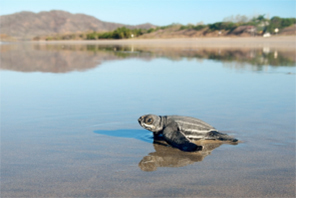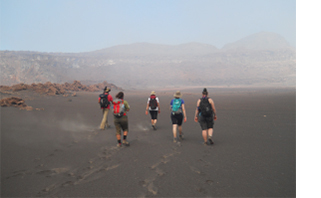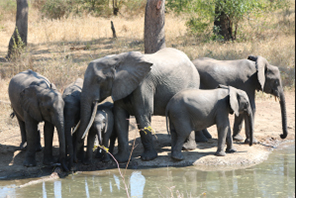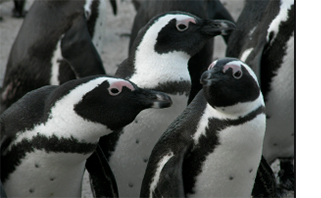.
The Top 10 Earthwatch Expeditions of 2016 (according to our volunteers)!
.
1. Uncovering the Mysteries of Ancient Colorado
 Around the globe, humans made a critical transition from hunting and gathering to agriculture. The Mesa Verde region in southwest Colorado is ideal for studying this transition. Volunteers are digging into the ancient past of this region to search for clues to the biggest shift in human history.
Around the globe, humans made a critical transition from hunting and gathering to agriculture. The Mesa Verde region in southwest Colorado is ideal for studying this transition. Volunteers are digging into the ancient past of this region to search for clues to the biggest shift in human history.
.
.
This was my first expedition with Earthwatch. Getting to participate in an actual dig alongside professionals and sharing in their excitement of discovery is an experience I’ll long remember. I appreciated how the Crow Canyon Archaeological Center took good care of its Earthwatch volunteers, and also how they provided information and context prior to our field experience. At the end of my week, I was wishing I had signed up for the two-week program, which I am hoping I will be able to do next year!
— Debra Berliner
.
.
2. Amazon Riverboat Exploration
 Aboard a riverboat deep in the heart of Peru’s flooded Amazon region, volunteers are helping to conserve the wildlife within this biodiverse area filled with pink river dolphins, many species of primates, macaws, caiman, giant river otters, and exotic fish.
Aboard a riverboat deep in the heart of Peru’s flooded Amazon region, volunteers are helping to conserve the wildlife within this biodiverse area filled with pink river dolphins, many species of primates, macaws, caiman, giant river otters, and exotic fish.
.
.
I’m an animal lover, and awakening to dolphins playing outside my door still gives me chills. I loved getting to meet the local people and see how they live. Traveling on the boats, taking our censuses, learning, looking at our amazing surroundings . . . There just aren’t words.
— Deborah Fohringer
.
.
3. Conserving Endangered Rhinos in South Africa
 Rhino populations are in crises due to the high value of rhino horn combined with widespread poaching. Volunteers are helping scientists in understanding the impact rhinos have on the environment to better help conserve and manage their populations in South Africa.
Rhino populations are in crises due to the high value of rhino horn combined with widespread poaching. Volunteers are helping scientists in understanding the impact rhinos have on the environment to better help conserve and manage their populations in South Africa.
.
.
If you’ve only seen animals in a zoo, prepare to have your mind blown! In the rhino expedition, you enter the animals’ world and spend hours watching them in their own habitat, interacting with their babies or their pals…This expedition truly takes you to another world, a world that is refreshing to know still exists apart from our fast-paced human world.
— Marcia Hanlon
.
.
4. Trailing Penguins in Patagonia
 How exactly do penguins forage for food at sea and how does this impact their young? Volunteers in Patagonia, Argentina, are helping researchers find the answers to these questions by tagging penguins and mapping the location of each nest in the colony.
How exactly do penguins forage for food at sea and how does this impact their young? Volunteers in Patagonia, Argentina, are helping researchers find the answers to these questions by tagging penguins and mapping the location of each nest in the colony.
.
.
.
I learned a great deal about Magellanic Penguins, their nesting behaviors, and the threats that they face. I also gained a better perspective on the research being conducted in Argentina and the researchers conducting it. This was also my first introduction to Argentina, which made the expedition even more educational.
— Doug DeNeve
.
.
5. Costa Rican Sea Turtles
 The leatherback sea turtle population in the Pacific, once the stronghold of the species, has declined by over 90% since 1980. To truly understand why this ancient species has declined so rapidly, volunteers are helping to observe and monitor nesting turtles, relocate eggs from nests in dangerous spots, and release hatchlings born in the hatchery into the ocean.
The leatherback sea turtle population in the Pacific, once the stronghold of the species, has declined by over 90% since 1980. To truly understand why this ancient species has declined so rapidly, volunteers are helping to observe and monitor nesting turtles, relocate eggs from nests in dangerous spots, and release hatchlings born in the hatchery into the ocean.
.
This was one of the best experiences I’ve ever had working as a team on a project. The researchers and field staff made the volunteers feel as though we were actually contributing something to this research, and in some small ways, helping to protect and preserve the mighty leatherback!
— Kathryn Bonn
.
.
6. Exploring an Active Volcano in Nicaragua
 The Masaya Valcano is persistently active—it erupts constantly, but it does not spew out molten rock. Instead, it releases a steady plume of gas. To understand how the volcano’s plume shapes the surrounding environment, volunteers are studying pollinating insects, collecting plant, water and soil samples, and setting up scientific instruments to monitor the Masaya’s crater.
The Masaya Valcano is persistently active—it erupts constantly, but it does not spew out molten rock. Instead, it releases a steady plume of gas. To understand how the volcano’s plume shapes the surrounding environment, volunteers are studying pollinating insects, collecting plant, water and soil samples, and setting up scientific instruments to monitor the Masaya’s crater.
.
Exploring an active volcano in Nicaragua was a once in a lifetime experience. Being able to work with scientists on their research, climb around on an active volcano, and then share what I learned with my K-8 students was an enriching and valuable experience. I was able to check in with my students daily and work with the scientists and other volunteers to answer their questions. I really believe this was a once in a lifetime and unique travel experience.
— Jennifer Fenner
.
.
7. Unearthing Ancient History in Tuscany
 The ancient seaside city of Populonia was once a center of metalworking and trade. Volunteers are helping archaeologists reconstruct the complex past of this region to better understand the lives of the people who lived in the city between the 7th and 1st century BCE.
The ancient seaside city of Populonia was once a center of metalworking and trade. Volunteers are helping archaeologists reconstruct the complex past of this region to better understand the lives of the people who lived in the city between the 7th and 1st century BCE.
.
.
[This expedition] made me more keen than ever to study anthropology and it was fascinating to see what life as an anthropologist involves. It also made me understand how archaeology, history, anthropology, and geology all have to link to fully understand the lives of people in ancient times.
— Lucia Simmen
.
.
8. Wildlife in the Changing Andorran Pyrenees
 In the high slopes of the Andorran Pyrenees, as in other mountain regions, climate change has already begun to alter the landscape. Some species are moving to higher latitudes and some have begun to decline. How have humans impacted this ecosystem? Volunteers are hiking through forests and meadows, studying alpine flora and surveying snowbed vegetation, to help researchers find out how animals are faring and how best to protect key species.
In the high slopes of the Andorran Pyrenees, as in other mountain regions, climate change has already begun to alter the landscape. Some species are moving to higher latitudes and some have begun to decline. How have humans impacted this ecosystem? Volunteers are hiking through forests and meadows, studying alpine flora and surveying snowbed vegetation, to help researchers find out how animals are faring and how best to protect key species.
.
Going on the Earthwatch expedition to Andorra gave me the chance to explore a region I never would have thought of when planning a normal vacation. If you have a sense of adventure and want to better understand a culture very different from your own, I strongly urge you to consider going on this expedition.
— Ryan Filer
.
.
9. Animals of Malawi in the Majete Wildlife Reserve
 How can we best help African wildlife return to and thrive in their native habitat? Volunteers are helping researchers gather the data they need to best manage the park by monitoring the many species in the reserve, conducting waterhole counts, and studying camera-trap images.
How can we best help African wildlife return to and thrive in their native habitat? Volunteers are helping researchers gather the data they need to best manage the park by monitoring the many species in the reserve, conducting waterhole counts, and studying camera-trap images.
.
.
Laying in my cot to sleep at night and seeing through the slit of my tent window—maybe 15 yards from my pillow—the tusks of elephants gleaming in the bright full moon as a herd passed through camp was a magical moment…Watching the parade of animals visit the waterhole over the course of an entire day was the stuff I had dreamed about since childhood. Yes, I could have had some similar experiences had I gone on a commercial safari, but this Earthwatch project allowed me the opportunity to be connected to the wildlife reserve and its inhabitants in as meaningful and authentic way as possible for a layperson.
— David Meyerson
.
.
10. South African Penguins
 Ninety percent of the penguin population on Robben Island has disappeared over the past 100 years. The island lies in the middle of major shipping lanes, and the risk of oil spills to local seabirds has been well documented. Here, volunteers are working with researchers to monitor the health of this island environment and monitoring seabirds to help reduce the impact of the various threats to this fragile environment.
Ninety percent of the penguin population on Robben Island has disappeared over the past 100 years. The island lies in the middle of major shipping lanes, and the risk of oil spills to local seabirds has been well documented. Here, volunteers are working with researchers to monitor the health of this island environment and monitoring seabirds to help reduce the impact of the various threats to this fragile environment.
.
.
Signing up for this project was the best thing I have done. It was such a privilege to be given the opportunity to live and work on an island that is full of history and inhabited by mostly birds and other wildlife. To be up close and personal with the penguins was such an awesome feeling.
— Emi Estrada
.
To learn more about any of these projects, email us at info@earthwatch.org, or call us at 1-800-776-0188.
.
Sign up for the Earthwatch Newsletter
Be the first to know about new expeditions, stories from the field, and exciting Earthwatch news.